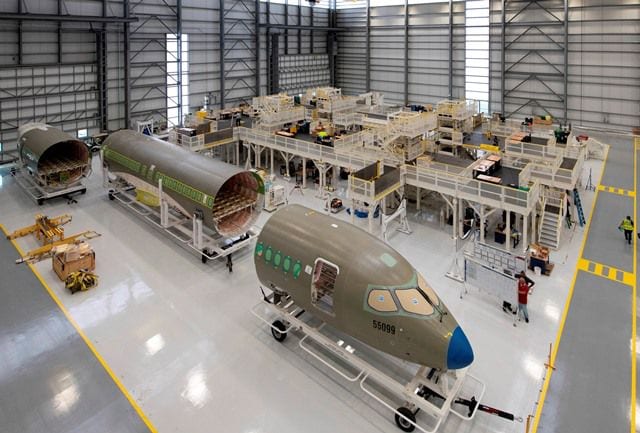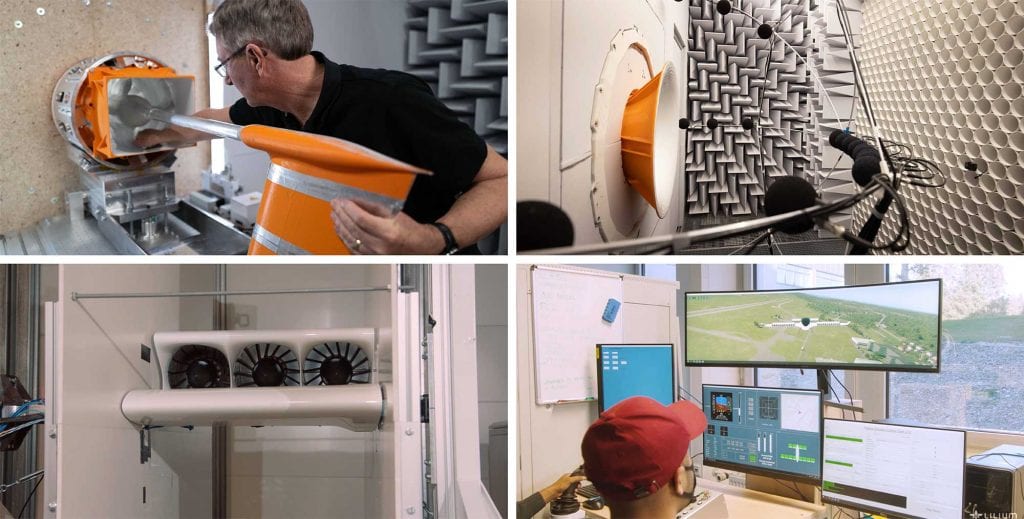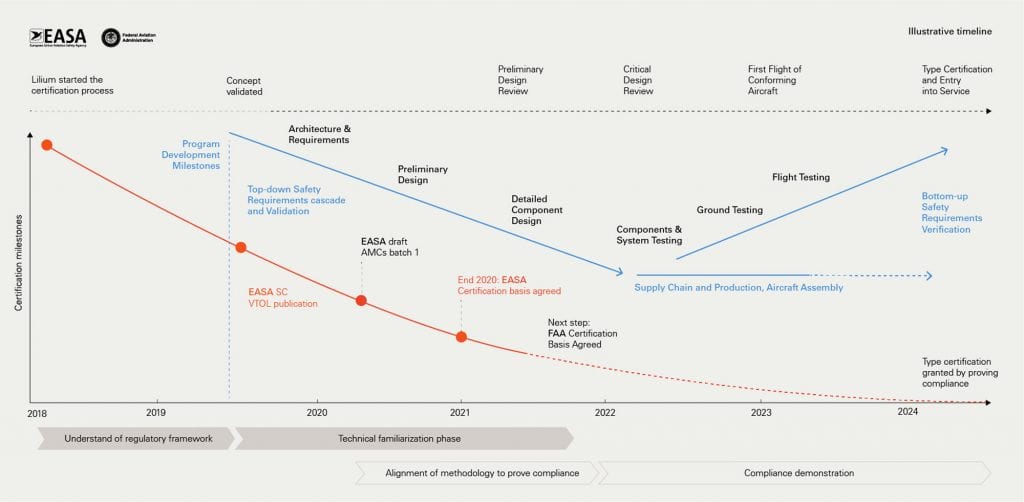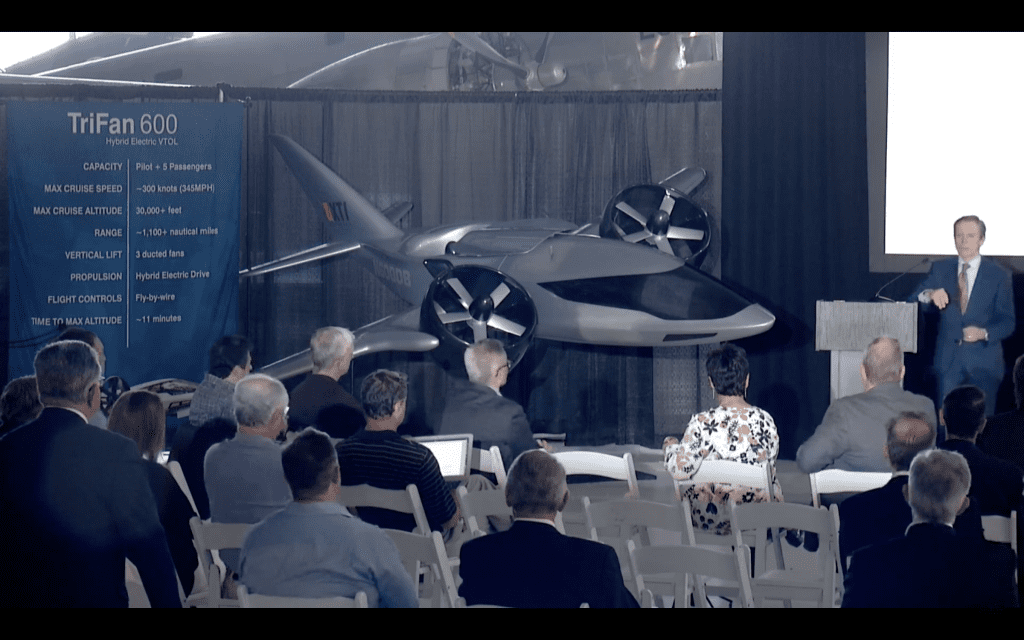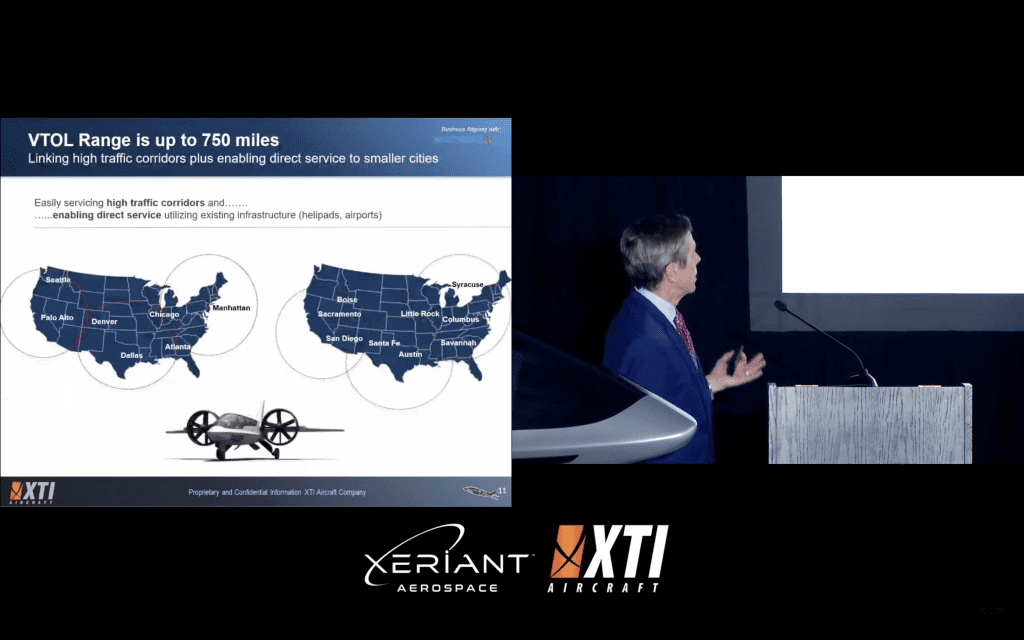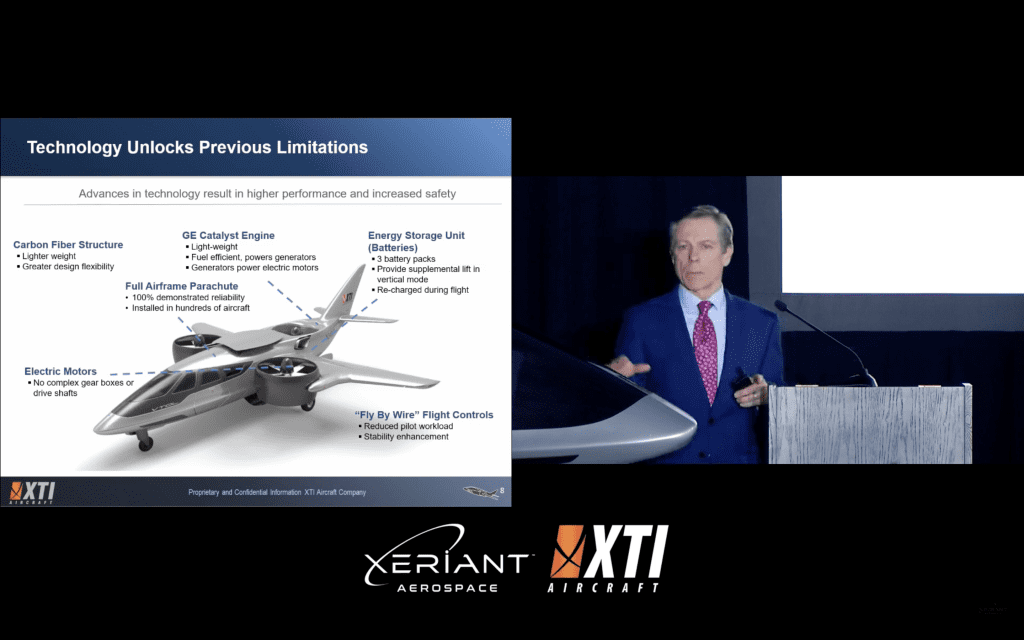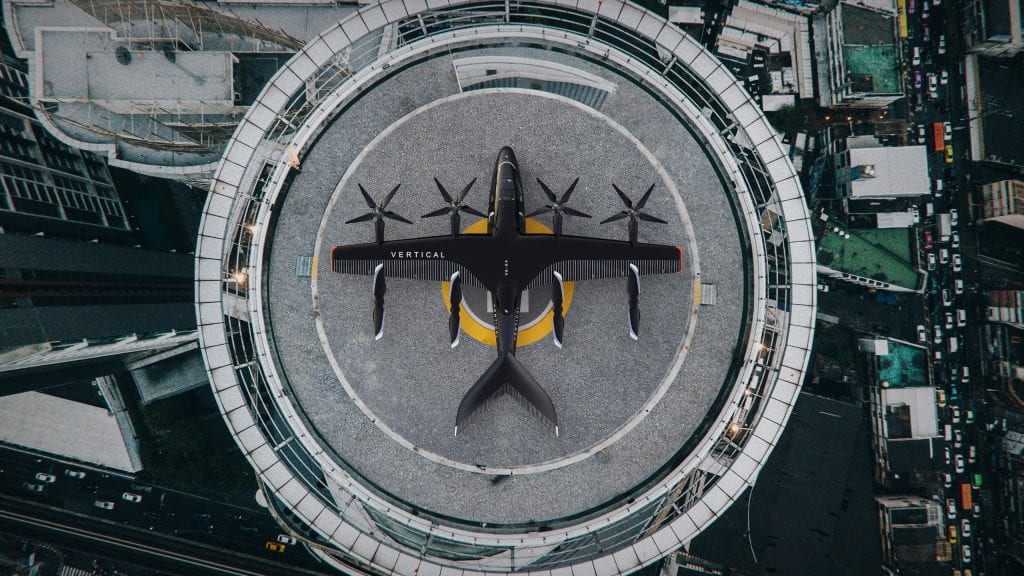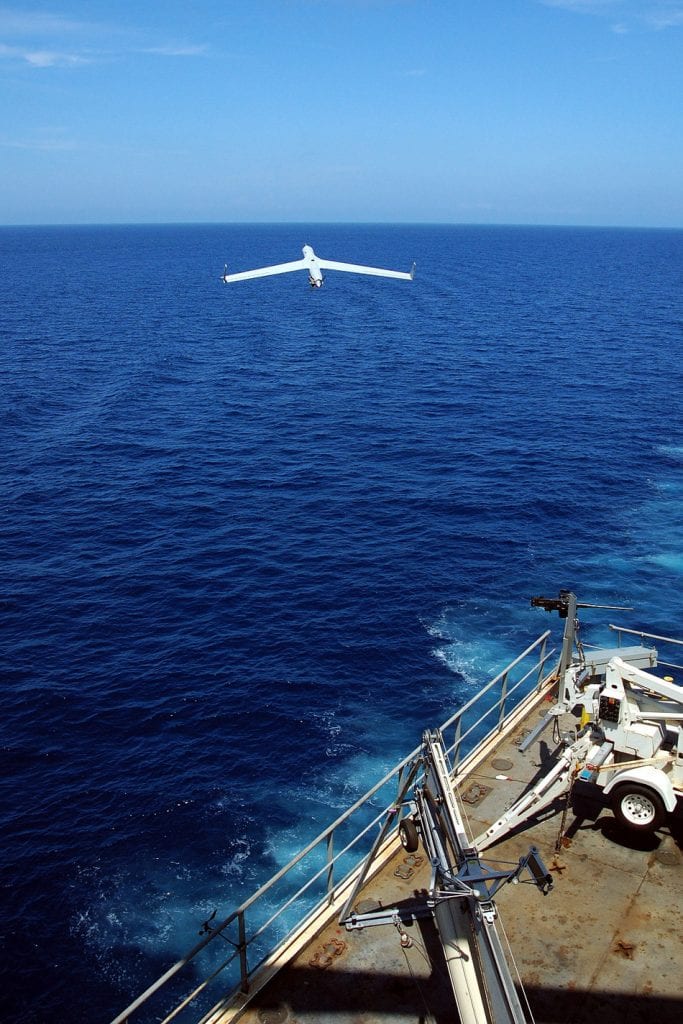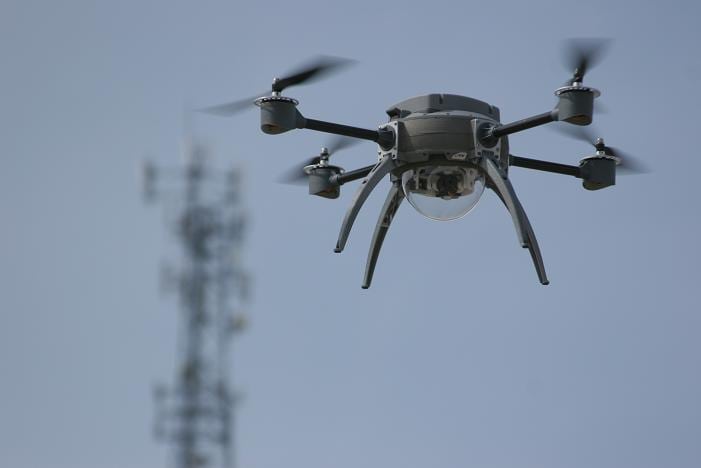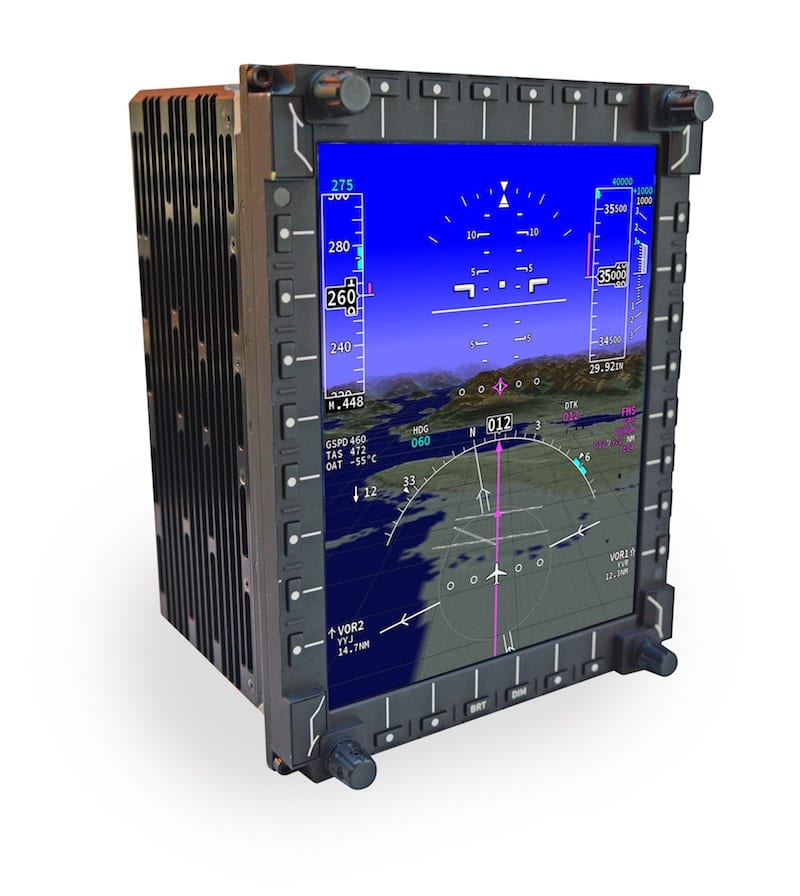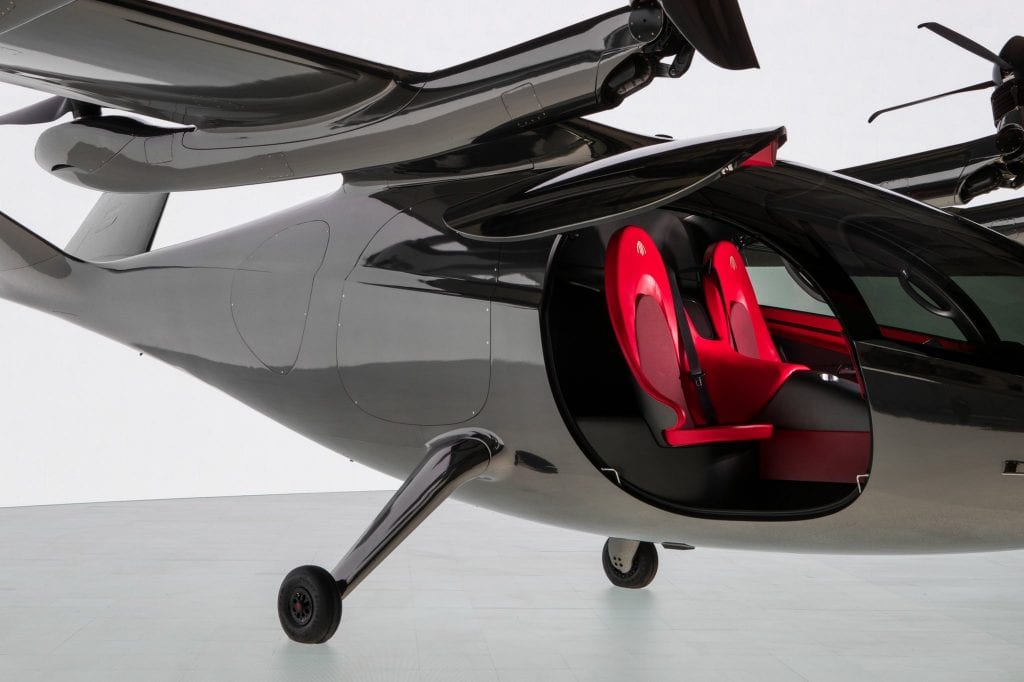
Check out the June 13 edition of What’s Trending in Aerospace, where editors and contributors for Avionics International bring you some of the latest headlines and updates happening across the global aerospace industry.
Commercial
Lufthansa Responds to Increase in Summer Travel Demand with Airbus A350, Boeing 747-8
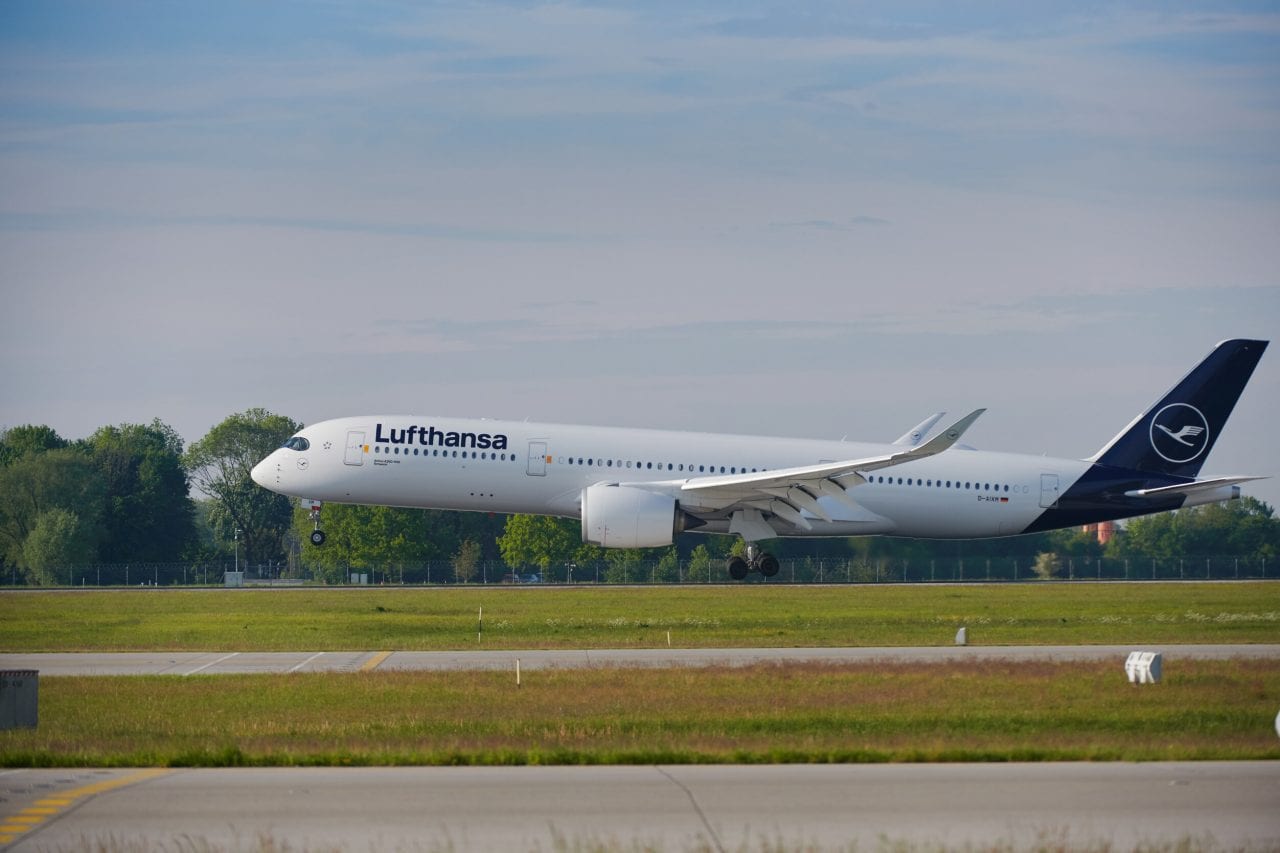
Lufthansa is re-positioning two of its wide-body aircraft, the Airbus A350—pictured here—and the Boeing 747-8 on summer vacation routes in response to an increase in demand generated by passengers flying from Munich and Frankfurt to Palma de Mallorca. (Lufthansa)
Lufthansa is responding to an increase in demand from passengers for travel to popular German vacation destinations and routes by re-positioning an Airbus A350 and a Boeing 747-8 for flights to Palma de Mallorca from both Frankfurt and Munich.
The booking figures for Palma de Mallorca have increased 25 times between April and the beginning of June 2021, according to a June 11 press release.
“The airline will be operating a Boeing 747-8 from Frankfurt to Palma de Mallorca four Saturdays in a row during the upcoming summer vacation in Hesse,” Lufthansa said in the release. “Additionally, the airline also plans to operate an Airbus A350 from Munich to the Balearic Island at the start of the summer vacation in Bavaria. Although these routes are normally operated by an Airbus A321, on 31 July, two wide-body Lufthansa aircraft will be arriving on Palma de Mallorca.”
French Aerospace OEMs Launch New Study of Sustainable Aviation Fuel
Airbus, Safran, Dassault Aviation, ONERA and Ministry of Transport are jointly launching an in-flight study, at the end of 2021, to analyze the compatibility of unblended sustainable aviation fuel (SAF) with single-aisle aircraft and commercial aircraft engine and fuel systems, as well as with helicopter engines, according to a June 10 press release.
Known as VOLCAN (VOL avec Carburants Alternatifs Nouveaux), this project is the first time that in-flight emissions will be measured using 100% SAF in a single-aisle aircraft, according to the release.
“Airbus is responsible for characterizing and analyzing the impact of 100% SAF on-ground and in-flight emissions using an A320neo test aircraft powered by a CFM LEAP-1A engine. Safran will focus on compatibility studies related to the fuel system and engine adaptation for commercial and helicopter aircraft and their optimization for various types of 100% SAF fuels,” Airbus said in the release. “ONERA will support Airbus and Safran in analyzing the compatibility of the fuel with aircraft systems and will be in charge of preparing, analyzing and interpreting test results for the impact of 100% SAF on emissions and contrail formation. In addition, Dassault Aviation will contribute to the material and equipment compatibility studies and verify 100% SAF bio-contamination susceptibility.
Military
First TH-73A Training Helicopter Delivered to the Navy

Leonardo delivered the first of 130 TH-73A training helicopters to the U.S. Navy on June 10. (Leonardo)
Leonardo delivered the first of 130 TH-73A training helicopters to the U.S. Navy on June 10, the company announced in a press release.
The Department of Defense originally awarded Leonardo a contract for 32 TH-73A aircraft in January 2020 and increased the contract by 36 helicopters in November in 2020, according to the release.
“The U.S. Navy expects the highest quality of training for its future aviators,” Gian Piero Cutillo, Leonardo Helicopters Managing Director, said in a statement. “We are honored to start delivery of the product chosen for this critical task. Today is just the beginning of a journey we have undertaken to support the Navy as it shapes the capabilities of future generations of aviation students.”
MQ-25 Model Conducts First Unmanned Aerial Refueling
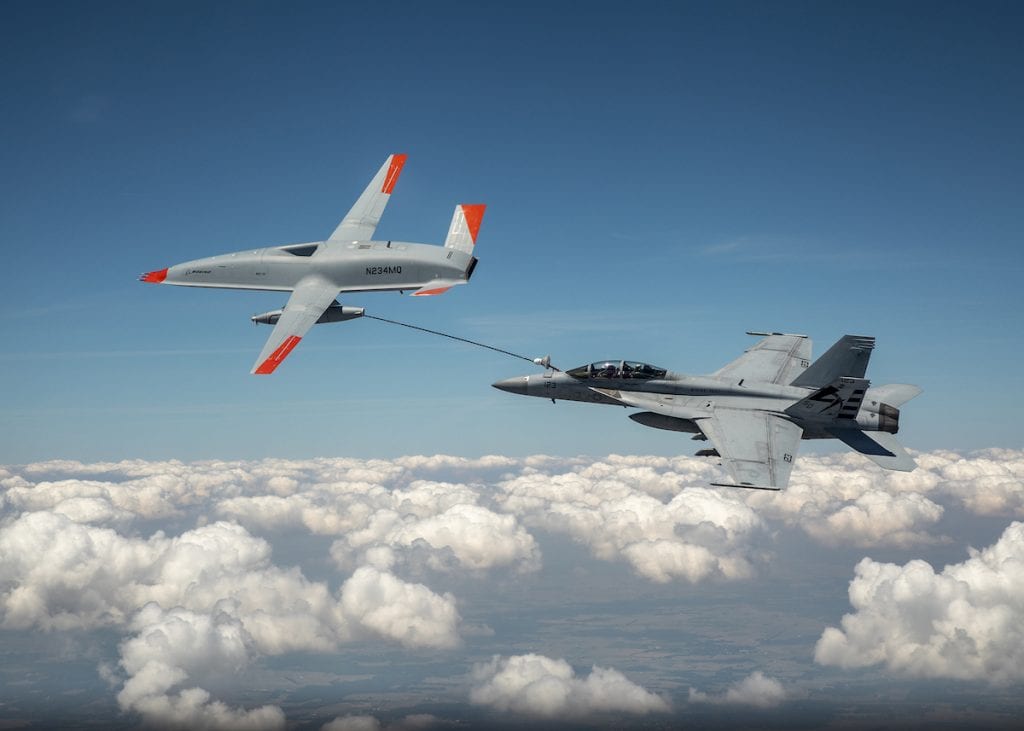
The Boeing MQ-25 T1 test asset transfers fuel to a U.S. Navy F/A-18 Super Hornet on June 4, marking the first time in history that an unmanned aircraft has refueled another aircraft. The MQ-25 Stingray will assume the carrier-based tanking role currently performed by F/A-18s, allowing for better use of the combat strike fighters and helping extend the range of the carrier air wing. (Photo: Kevin Flynn)
The Boeing MQ-25A test asset, called T-1, conducted the first ever unmanned tanker to manned aircraft aerial refueling operation last week, the Navy announced June 7.
This flight demonstration proved the MQ-25A Stingray carrier-based unmanned tanker can fulfill its stated role using the standard probe-and-drogue aerial refueling method, the Navy and Boeing said.
The flight test was based around the MidAmerica Airport in Mascoutah, Ill., where the T-1 is based for testing. During the flight test on June 4, a Navy F/A-18 E/F Super Hornet approached the unmanned T-1 in close formation behind it, conducted a formation evaluation, wake survey, drogue tracking and then plugged into the T-1. The T-1 successfully transferred fuel from its Aerial Refueling Store (ARS) to the Super Hornet.
Boeing said this maneuver required as little as 20 feet of separation between the aircraft and both were flying at “operationally relevant speeds and altitudes.”
Raytheon Lands Possible $3.1 Billion Contract for F-15EX Radar

The F-15EX first arrived at Eglin Air Force Base in March to begin testing with the U.S. Air Force. (Boeing)
The U.S. Air Force on June 9 awarded Raytheon Technologies a contract worth up to $3.1 billion for the production, modernization, and support of APG-82 Eagle Vision radars for Boeing F-15EXs and possibly other foreign and domestic F-15s.
The contract is valid through 2036 and does not include any immediate delivery orders for Foreign Military Sales (FMS), “but does allow for future FMS orders,” the Air Force said. Raytheon is to build the radars at the company’s El Segundo, Calif. plant.
In 2010, Boeing F-15E Strike Eagles received the the first APG-82s to replace the aircraft’s Raytheon APG-70 radar, first fielded in 1987.
In 2019, under the B-52 bomber’s radar modernization program (RMP), Boeing picked Raytheon to design and build an active electronically scanned array (AESA) radar, based on AESA technologies in Raytheon’s APG-79/APG-82 family, to replace the bomber’s APQ-166 terrain-following and mapping radars by Northrop Grumman .
David Rockwell, a senior military electronics analyst at the Teal Group, said last year that the “new normal” for military radar programs involves just two companies, Raytheon and Northrop Grumman, and “de facto non-competitive pricing for AESA upgrades.”
Connectivity
SmartSky Opens Southeast Corridor, Remains on Track for 2021 Launch
SmartSky Networks announced the completion of all technical milestones and the opening of the first fully operational coverage zone of its next-generation inflight communications network, enabling route-based flight demonstrations and marking an inflection point on its path to certification and commercial launch later this year.
SmartSky has now proven it can provide office-grade, bi-directional, multi-Mbps inflight connectivity with very low latency for business jet and turboprop flights transiting the network’s Southeastern corridor that covers a large contiguous portion of Florida, Georgia, and South Carolina.
“While our primary goal remains lighting up the remainder of the nationwide network in the coming months, today we are showcasing the unparalleled inflight networking capabilities and advanced services that SmartSky is bringing to market for the connected aircraft ecosystem of operators, manufacturers, service providers and passengers,” SmartSky Networks CEO David Helfgott said in a June 10 press release.
SpaceX, Telesat Forecast 90% of IFC Service in 10 Years Will Be LEO

SpaceX, OneWeb, and Telesat executives discuss Low-Earth Orbit options for In-Flight Connectivity at the Connected Aviation Intelligence Summit.
SpaceX, OneWeb, and Telesat executives agree that in 10 years, most aviation connectivity will come through satellites in Low-Earth Orbit — a major shift from the primarily Geostationary (GEO) service of today.
Jonathan Hofeller, vice president of Starlink Commercial Sales for SpaceX was bullish, forecasting that 90 percent or more of In-Flight Connectivity (IFC) service will come from LEO in the next decade
“Passengers and customers want a great experience that GEO systems simply cannot provide. It’s going to be up to the individual airline whether they want to be responsive to that — or if they there are OK with having a system that is not as responsive to their customers’ demands,” Hofeller said Wednesday, speaking virtually at the Connected Aviation Intelligence Summit.
Embedded Avionics
Curtiss Wright Awarded Contract to Upgrade US Navy Seahawk Helicopter Mission, Flight Management Computers

U.S. Navy’s MH-60 Sea Hawk helicopter is getting a flight management and mission computer upgrade. (Lockheed Martin)
Curtiss-Wright Corp. was awarded a contract by Lockheed Martin to provide its Modular Open System Approach (MOSA) computers and video processing modules to upgrade the mission computer and flight management computer (MC/FMC) on the U.S. Navy’s fleet of Sikorsky MH-60R/S Seahawk helicopters, according to a June 7 press release.
The initial contract is valued at $24 million, with an estimated lifetime value of $70 million.
Under the contract, Curtiss-Wright is providing Lockheed Martin with rugged single board computers and video processing modules. The modules result from Curtiss-Wright’s Modified COTS program, which enables system integrators to upgrade individual modules in their legacy systems without having to replace the entire system, significantly speeding delivery of advanced technology to the warfighter. Shipments began in December 2020.
Unmanned
FAA Forms New Rulemaking Committee to Advance BVLOS Drone Operations
The Federal Aviation Administration (FAA) created a new aviation rulemaking committee to develop a regulatory path for beyond visual line of sight (BVLOS) drone flights, FAA Administrator Steve Dickson announced at the FAA Unmanned Aircraft System (UAS) Symposium on June 9.
“I’m very pleased to announce that the FAA is forming a new aviation rulemaking committee for ARC [Aviation Rulemaking Committee], to help us develop a regulatory path for routine beyond visual line of sight operations,” Dickson said. “This committee will consider the safety, security and environmental needs as well as societal benefits of these operations.”
BVLOS drone operations will be key to enabling routine package delivery and infrastructure inspections, Dickson said.
Dickson said the committee would be submitting its recommendations to the FAA within six months.
eVTOLs
Archer Unveils Maker eVTOL
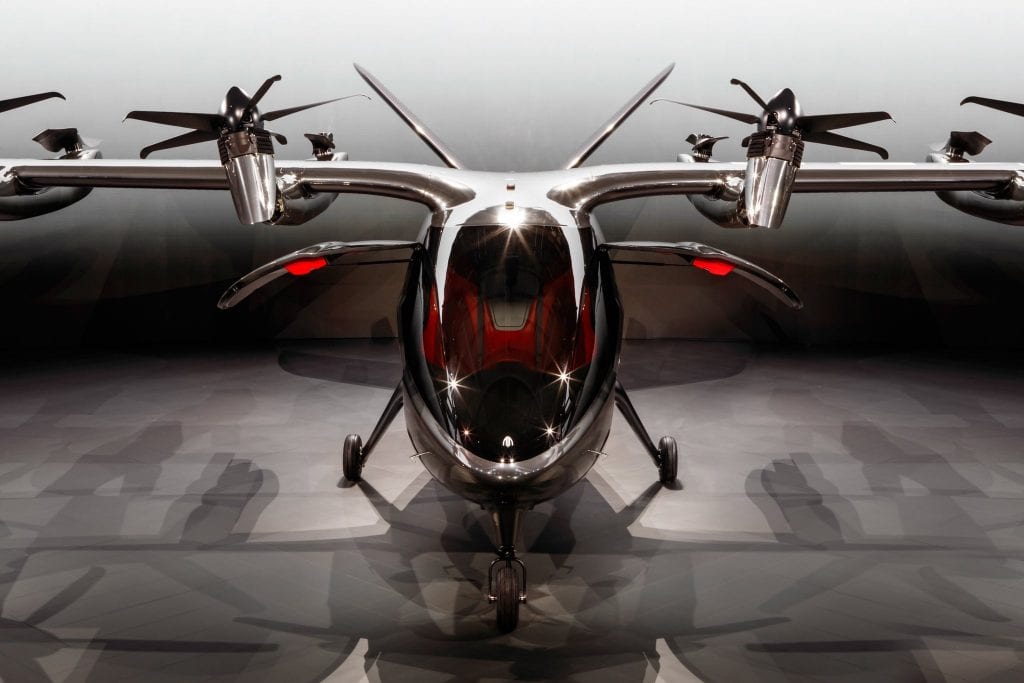
Archer held a live unveiling of its new Maker eVTOL aircraft in California last week. (Archer Aviation)
California-based electric vertical takeoff and landing aircraft (eVTOL) aircraft developer Archer, debuted its Maker aircraft during an unveiling event June 10.
Maker is being developed with a range of 60 miles and a cruising speed of 150 mph.

“Maker’s unveil has been years in the making and marks a pivotal juncture for the eVTOL industry and future of transportation,” said Brett Adcock, co-founder and co-CEO of Archer. “Every day at Archer, we’re working to build the future, and we have never felt closer than we did introducing the world to Maker.”
Vertical Aerospace to be Publicly Traded After Merger with Broadstone

Vertical Aerospace’s eVTOL, the VA-X4, has a range of over 100 miles with a top speed of 202 mph and a five-person capacity. (Vertical Aerospace)
The electric vertical take-off and landing (eVTOL) aircraft manufacturer Vertical Aerospace is becoming a publicly traded company with a value of $2.2 billion after a merger with Broadstone Acquisition Corp, an acquisition company, according to a June 10 release.
“This is the most exciting time in aviation for almost a century; electrification will transform flying in the 21st century in the same way the jet engine did 70 years ago,” Stephen Fitzpatrick, Vertical CEO and Founder, said in a statement. “Today’s announcement brings together some of the largest and most respected technology and aeronautical businesses in the world and together we can achieve our aim of making the VA-X4 the first zero carbon aircraft that most people will fly on. The United Kingdom is already a global leader in aerospace innovation and we believe Vertical Aerospace will be the British engineering champion to drive the aviation industry forward.”
The company also announced investments from American Airlines, Avolon, Honeywell, and Rolls-Royce.
“Emerging technologies are critical in the race to reduce carbon emissions and we are excited to partner with Vertical to develop the next generation of electric aircraft,” Derek Kerr, Chief Financial Officer of American Airlines said in a statement. “For years, American has led the industry in investing in newer, more fuel-efficient aircraft. Today’s partnership is another example of that commitment, and an investment in the future of air mobility. We are excited about the prospect of what this could mean for our customers, and our company.”
Vertical Aerospace now has pre-orders for up to 1,000 of its VA-X4 aircraft which is set to take its first test flight this year and launching commercially in 2024.
Honeywell to Provide Avionics and Flight Control Systems for Lilium’s 7-Seater Jet
Lilium has a new partnership with Honeywell Aerospace to create the avionics and flight control systems for its electric vertical take-off and landing (eVTOL) aircraft, the 7-Seater Jet, the company announced on June 9.
“Honeywell has a decades-long track record of developing and certifying avionics and safety systems for leading aerospace companies and has worked alongside Lilium to develop a bespoke solution for our aircraft,” Yves Yemsi, Chief Program Officer at Lilium, said in a statement. “We are proud that Honeywell is joining our roster of world-class aviation partners and also as one of our investors as we prepare to launch commercial operations in 2024.”
Lilium debuted its 7-Seater Jet design in April which features an architecture based on efficient cruise flight for regional air mobility. The aircraft will have a range of 200 kilometers and speeds up to 300 kph. The aircraft uses forward canards, main wings, and a distributed propulsion system with 36 individually controlled flaps each containing an embedded ducted fan.
The post What’s Trending in Aerospace – June 13, 2021 appeared first on Aviation Today.
Check FastApn access for commercial satcoms at Fastapn
Flytlink – Avionics, Satcom’s and IFE Consultants
